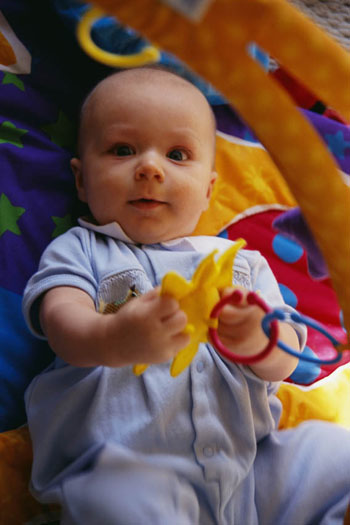
Chapter 17. Event-Related Potentials
Synopsis


EVENT-RELATED POTENTIALS
Estimated Completion Time:
Approximately 5 minutes.
Synopsis:
The video in this module, from the laboratory of Debra Mills, Ph.D., Emory University,
shows an ERP procedure in which the brain activity of an infant is recorded as she hears
a puppet reciting words. The girl’s brain-wave patterns will be analyzed to see how her brain
responded when she heard words she understood.
Video
Among the techniques that researchers use to study the brain activity of infants and young children is the recording of event-related potentials (ERPs), that is, changes in the brain’s electrical activity that occur in response to particular stimuli. In this procedure, the child is presented with different stimuli, and the electrodes in the cap record corresponding changes in electrical activity that occur in various areas of the child’s brain.
The following video shows an ERP procedure being conducted in the laboratory of Debra Mills. The objective of the procedure is to determine differences in an infant’s brain activity when she hears words she understands versus words she doesn’t understand. In this particular trial, the 15-month-old infant hears the words appearing to be recited by a hand puppet.
The activity that occurs in the two halves of the child’s brain
as she listens to the puppet can be seen in EEG recordings.
Later these brainwave patterns will be analyzed to see how the infant’s brain responded when she heard words she understood.
As Mills explains, ERP research with young children of different ages suggests that children’s acquisition of language results
in changes in the brain organization, particularly in the cerebral lateralization of language.
Essay Question

1.
Why are EEG recordings often the method of choice for studying brain activity in infants and young children?
Activity Completed!
Congratulations, you have completed this activity!
You have received a provisional score for your essay answers, which have been submitted to your instructor.